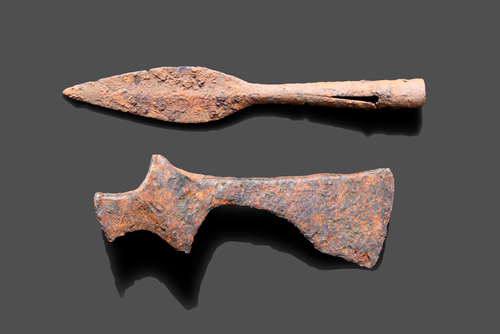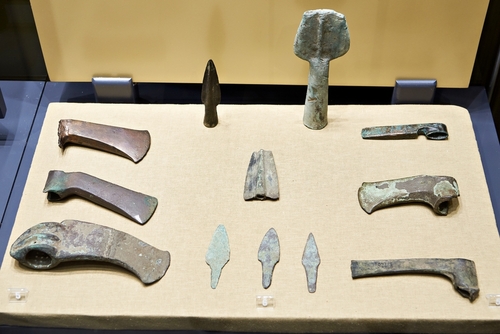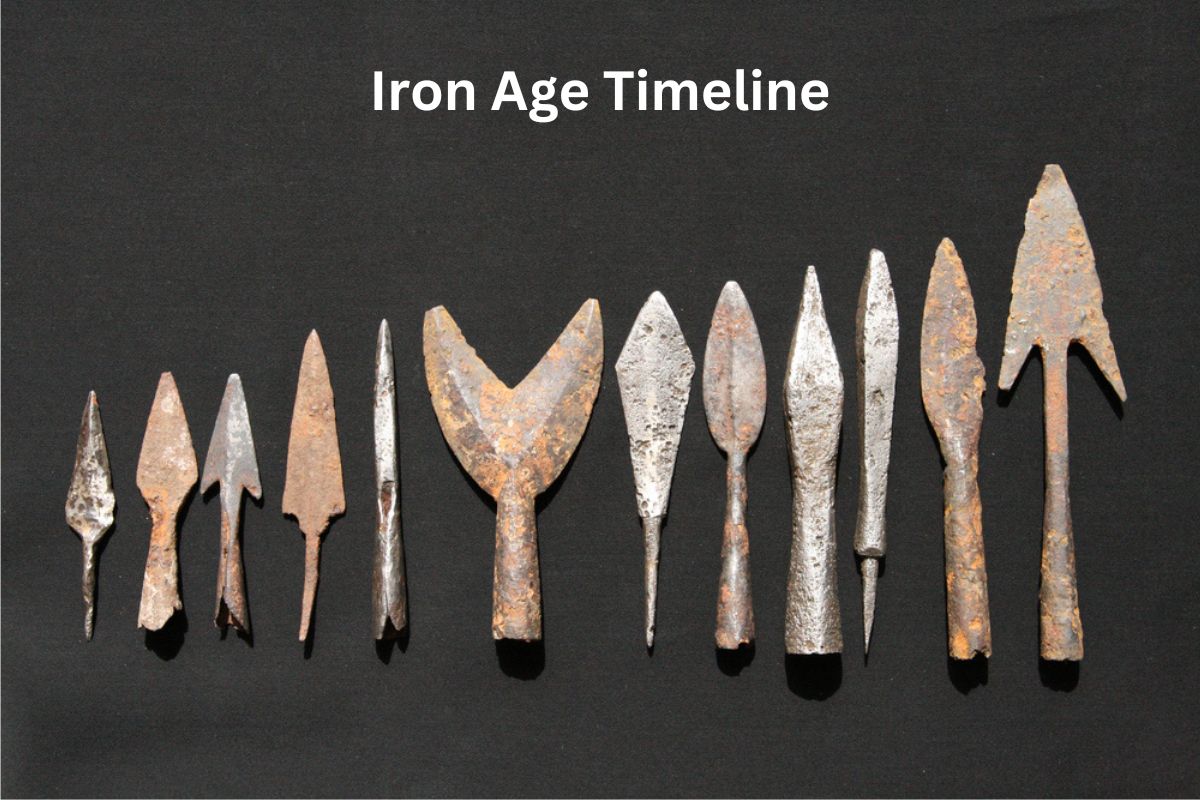The Iron Age was a pivotal period in human history characterized by the widespread use of iron tools and weapons, marking a significant advancement over the preceding Bronze Age.
This era spanned several centuries and witnessed the gradual adoption of ironworking technology across different regions of the world.
The Iron Age is typically divided into six key periods, each marked by distinctive developments and cultural achievements, ranging from the emergence of the Hittites in Anatolia to the Islamic Golden Age and the independent ironworking cultures of sub-Saharan Africa.
In this overview, we will delve into the key highlights and transitions that defined each phase of the Iron Age, shedding light on its global impact and lasting legacy.
| Iron Age Period | Time Range | Key Developments and Regions |
|---|---|---|
| Early Iron Age | 1200 BCE – 600 BCE | – Adoption of iron tools in the Near East and Anatolia. – Emergence of the Hittites. |
| Middle Iron Age | 600 BCE – 1 CE | – Spread of iron technology to the Mediterranean and Europe. – Classical antiquity in the Mediterranean (Greece, Rome). – Rise of various Celtic cultures in Europe. |
| Late Iron Age | 1 CE – 500 CE | – Continued development of cultures, kingdoms, and empires. – Prominence of the Han Dynasty in China and the Roman Empire in Europe. |
| Post-Classical Iron Age | 500 CE – 1000 CE | – Early medieval period in Europe with the decline of the Western Roman Empire. – Emergence of medieval kingdoms in Europe. – Significant developments in other parts of the world, including the Gupta Empire in India. |
| Islamic Iron Age | 7th century CE onwards | – Technological and cultural advancements in the Islamic world beginning in the 7th century CE. |
| Sub-Saharan Africa Iron Age | Varies by region | – Independent development of ironworking technologies in sub-Saharan Africa, leading to the emergence of Iron Age cultures like the Nok civilization in West Africa. |
Timeline of the Iron Age
Early Iron Age (1200 BCE – 600 BCE):
Iron Adoption: The Early Iron Age marked the transition from the Bronze Age to the Iron Age. Iron tools and weapons gradually replaced those made of bronze, thanks to the discovery that iron could be mined, smelted, and worked into useful implements.
Also Read: Facts About the Iron Age
Hittites: The Hittites, an ancient Anatolian civilization, are one of the earliest known cultures to have widely adopted iron technology. They were among the first to use iron extensively for weapons and tools.

Middle Iron Age (600 BCE – 1 CE):
Spread to Mediterranean and Europe: During this period, ironworking technology spread to the Mediterranean region, including ancient Greece and Rome, as well as to various parts of Europe. This transition was gradual, with iron gradually replacing bronze in many aspects of daily life.
Also Read: Stone Age Facts
Classical Antiquity: In the Mediterranean, this era corresponds to classical antiquity. It saw the rise of powerful empires like the Roman Empire and the philosophical and cultural achievements of ancient Greece.
Celtic Cultures: In Europe, the Middle Iron Age witnessed the emergence of Celtic cultures. The Celts were known for their skilled ironwork, including weapons, jewelry, and tools.
Also Read: Timeline of Celtic History
Late Iron Age (1 CE – 500 CE):
Continued Development: The Late Iron Age marked a period of continued development in various cultures, kingdoms, and empires worldwide.
Han Dynasty and Roman Empire: Notable examples include the Han Dynasty in China and the Roman Empire in Europe. Both were known for their advanced ironworking technologies and infrastructure.
Post-Classical Iron Age (500 CE – 1000 CE):
Early Medieval Period: In Europe, this period coincided with the early medieval period, characterized by the decline of the Western Roman Empire and the fragmentation of Europe into various Germanic and medieval kingdoms.
Gupta Empire: In India, this era saw the Gupta Empire, which is often referred to as a golden age in Indian history. The Guptas made significant contributions to science, mathematics, and art.

Islamic Iron Age (7th century CE onwards):
Islamic Advancements: With the rise of Islam in the 7th century CE, the Islamic world entered its own Iron Age. This period was marked by significant advancements in various fields, including mathematics, astronomy, medicine, and architecture.
Technological Progress: The Islamic world played a crucial role in preserving and advancing knowledge from ancient civilizations, and this era is often referred to as the Islamic Golden Age.
Sub-Saharan Africa Iron Age (Varies by region):
Independent Ironworking: Ironworking technology developed independently in various regions of sub-Saharan Africa. This period is significant because it led to the emergence of Iron Age cultures in Africa.
Nok Civilization: One notable example is the Nok civilization in West Africa, which is known for its terracotta sculptures and ironworking skills. The Nok people were among the early iron users in Africa.
It’s important to recognize that the Iron Age didn’t occur uniformly across the globe. Different regions entered the Iron Age at different times, and the specific developments and cultures varied significantly from one place to another.
